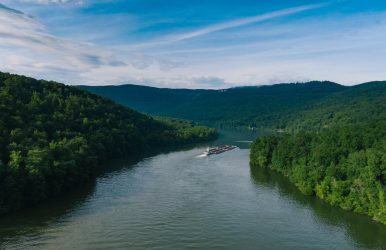8 Great Reasons To Plan A Getaway To Sevierville
BY Abdul Aziz Mar 30, 2023
Sevierville, Tennessee, is a charming city in the heart of the Smoky Mountains. With its breathtaking natural scenery, rich history, and abundance of outdoor activities, it's no wonder that Sevierville is a popular destination for travelers worldwide. Whether you're looking to unwind in a peaceful mountain setting, explore the great outdoors, or indulge in retail therapy, Sevierville has plenty to offer. In this blog post, we'll explore why Sevierville should be at the top of your list for your next getaway. So whether you're a nature lover, a history buff, or a shopaholic, read on to discover why Sevierville is the perfect destination for you. Walking In The Smokies The Great Smoky Mountains National Park has hundreds of hiking trails, ranging from easy nature walks to challenging backcountry treks. As you explore the park, you'll be surrounded by stunning scenery, including cascading waterfalls, old-growth forests, and panoramic views of the mountains. Whether you're a seasoned hiker or just looking for a stroll, walking in the Smokies is a great way to connect with nature and create unforgettable memories. And with Sevierville's convenient location at the entrance to the park, it's the perfect base for your hiking adventure in the Smoky Mountains. Where To Stay A wide variety of lodging options are available, including cabins in Sevierville TN, which offer a unique and cozy experience nestled in the Great Smoky Mountains. Visitors can choose from luxurious options with amenities such as hot tubs, fireplaces, game rooms, or more rustic cabins with breathtaking views of the mountains. Additionally, nearby Gatlinburg offers a variety of dining options to explore. Family Fun With its natural beauty, amusement parks, and family-friendly attractions, Sevierville is a great place to visit with kids of all ages. One of the top family-friendly destinations in Sevierville is Dollywood, an amusement park with rides, shows, and attractions for all ages. From roller coasters and water rides to live entertainment and special events, Dollywood has it in the family to enjoy. Kids will love the chance to meet their favorite characters from the park's shows, while adults will appreciate the park's stunning scenery and wide range of dining options. Another tremendous family-friendly attraction in Sevierville is the Rainforest Adventures Discovery Zoo. This indoor/outdoor zoo features many exotic animals worldwide, including reptiles, birds, and mammals. Kids will love getting up close and personal with animals like lemurs, macaws, and sloths and learning about conservation efforts to protect these species. For indoor family fun, Sevierville has a variety of options as well. The NASCAR SpeedPark is a go-kart and amusement park with mini-golf, bumper boats, and a climbing wall. At the same time, the Sevier Air Trampoline and Ninja Warrior Park are great places to burn off energy with activities like trampolining, dodgeball, and obstacle courses. Cove Mountain Laurel Falls Shuttle Hike Cove Mountain Laurel Falls is a stunning waterfall accessible via a shuttle hike that is both fun and challenging. The shuttle will take you to the trailhead, where you'll begin your hike through lush forests and across babbling streams. Along the way, you'll encounter various wildlife and plant life, including rare wildflowers and old-growth trees. As you make your way to the falls, the scenery becomes more and more dramatic, culminating in the stunning sight of Cove Mountain Laurel Falls itself. This 60-foot waterfall is surrounded by towering cliffs and dense foliage, creating a truly magical atmosphere. Golf Golf is a popular activity in Sevierville, with several top-rated courses in the area, making it an ideal destination for golf enthusiasts. The Sevierville Golf Club and the Gatlinburg Golf Course are just examples of the many options available to visitors. Additionally, March Madness, a unique golf event hosted by LaFlare Golf, takes place in Sevierville annually. This event features a mix of golf and basketball, with players competing in both sports to win prizes. Whether you're a serious golfer or just looking to have fun on the course, Sevierville offers something for everyone. Ziplining With its beautiful mountainous terrain and lush greenery, Sevierville is the perfect place to experience the rush of zipping through the air at high speeds. Several zipline adventures are available in Sevierville, each offering a unique and exciting experience such as: Adventure Park at Five Oaks, features seven ziplines up to 2,000 feet long, a sky bridge, and a tree canopy tour. Legacy Mountain Ziplines, offers spectacular views of the Smoky Mountains and six ziplines spanning over four miles. Foxfire Mountain Adventure Park offers the fastest, highest, and longest zipline in Tennessee for those looking for an extra adrenaline rush. No matter which adventure you choose, ziplining in Sevierville will be an unforgettable experience. Shopping Home to Tanger Outlets, Sevierville offers over 100 stores featuring designer brands at discounted prices. From clothing to accessories to home décor, shoppers can find everything they need in one convenient location. But that's not all – Sevierville also boasts several unique shopping destinations, such as: The Apple Barn Village features various shops selling locally-made products, including apple cider, jams, and crafts. The Smoky Mountain Knife Works is another popular shopping destination, offering a vast selection of knives and outdoor gear. And for those interested in antiques and collectibles, the Great Smoky Arts and Crafts Community offers over 100 shops featuring handmade items from local artisans. Water Activities Sevierville is situated in a location surrounded by rivers and lakes, making it an ideal spot for kayaking, fishing, and other water sports in popular areas such as: Douglas Lake is a popular destination for boating and fishing, with over 30,000 acres of water and various fish species such as bass, catfish, and crappie. Visitors can rent boats or bring their own to explore the lake's many coves and inlets. The French Broad River is another popular spot for kayaking and canoeing, with various options for different skill levels. Thrill-seekers may also enjoy white-water rafting on the Pigeon River, which offers rapids ranging from Class I to IV. For a more relaxing experience, visitors can take a leisurely float down the Little Pigeon River in a tube or on a raft. Conclusion Sevierville is an exceptional travel destination offering visitors diverse experiences that will leave lasting memories. From its rich history and cultural attractions to its picturesque landscapes and thrilling outdoor adventures, Sevierville has everything to enjoy. Whether seeking a peaceful escape from the hustle and bustle of everyday life or an action-packed getaway filled with adventure, Sevierville is the perfect place to unwind, relax, and recharge. So, plan your next vacation to Sevierville and get ready to experience all the beauty and excitement this fantastic destination offers! Read More: 10 Best Nude Beaches In The World A Guide To National Parks In Virginia – Latest Guide What To Look For When Purchasing A Beach Tent For Vacation












